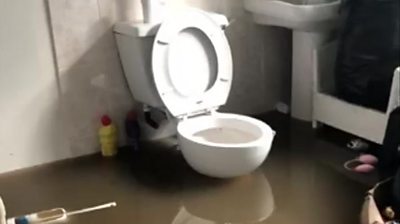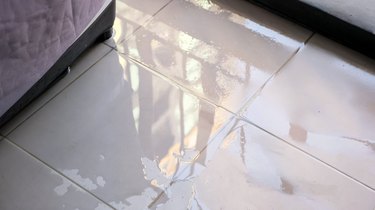How to Stop Bathroom Water Damage
How to Stop Bathroom Water Damage
Blog Article
What are your concepts on How to Repair and Prevent Bathroom Water Damage??

Water damage typically happens in the restroom because of the water made use of day-to-day. Often, the damage could be a little mold and mildew from the shower. Other times, it's substantial damage on your flooring. Whatever it is, it is constantly good to understand the cause and also avoid it prior to it takes place.
This guide will go through a few of the usual sources of water damage in the shower room. We will certainly also examine what you can do to avoid these reasons from harming your washroom. Let's dive in.
5 Typical Sources Of Water Damage in Bathrooms
These are the typical factors you would have water damage in your restrooms as well as just how you can detect them:
Burst or Dripping Pipes
There are numerous pipelines bring water to various parts of your washroom. Some pipes take water to the commode, the sink, the faucets, the shower, as well as lots of other locations. They crisscross the little location of the bathroom.
Every now and then, these pipelines could get corroded as well as ruptured. Various other times, human activity could trigger them to leakage. When this takes place, you'll locate water in the edges of your bathroom or on the wall.
To identify this, watch out for bubbling walls, mold and mildews, or mildew. Call an expert emergency plumbing to repair this when it happens.
Cracks in your wall surface floor tilesv
Washroom wall tiles have been specifically designed for that function. They safeguard the wall surface from dampness from people taking showers. Nevertheless, they are not unbreakable.
In some cases, your bathroom wall ceramic tiles fracture and also permit some dampness to seep right into the wall. This might possibly damage the wall surface if you do not take any kind of action. If you notice a split on your wall floor tiles, repair it quickly. Do not wait till it damages your wall surface.
Overruning commodes and also sinks
As human beings, often we make mistakes that can trigger some water damage in the washroom. As an example, leaving your sink faucet on could create overruning as well as damage to other parts of the bathroom with moisture.
Additionally, a damaged toilet could trigger overflowing. For example, a broken commode take care of or various other parts of the tank. When this occurs, it can harm the floor.
As soon as you notice an overruning sink or toilet, call a plumber to assist deal with it immediately.
Roof covering Leakages
Often, the trouble of water damage to the bathroom could not come from the restroom. For example, a roof covering leak can trigger damage to the washroom ceiling. You can detect the damage done by considering the water stains on the ceiling.
If you locate water discolorations on your ceiling, inspect the roof to see if it's harmed. After that, call an expert to help address the problem.
Excess Moisture
It's cool to have that lengthy shower as well as dash water while you dance around as well as act like you're executing, however in some cases these acts could create water damage to your shower room.
Sprinkling water around can cause water to head to corners and also form mold and mildews. Enjoy just how you spread out excess moisture around, and when you do it, clean it up to avoid damages.
Conclusion
Water damage to your bathroom can be bothersome. Nevertheless, you can handle it if you protect against a few of the reasons stated in this overview. Call an expert emergency plumbing professional if you observe any kind of extreme damage.
How to Prevent Water Damage in Your Bathroom?
Water damage repair is an expensive, meticulous, and lengthy process. Unfortunately, bathrooms are the most susceptible rooms to water damage due to toilets, showers, and sinks. Pipes and fixtures wear out over time and are not immune to damage. But all is not lost, as there are ways to prevent water damage from occurring in your bathroom.
Check Your Plumbing
Nothing lasts forever, especially pipes, which can rust and begin leaking over time. You should periodically conduct pipe inspections and pay attention for any musty smells or water stains that may indicate you need water damage repair. Here are some things to check:
Frequently test valves for your toilet, shower, and sink to ensure they are properly working.
Check faucet supply lines hidden under vanities and replace when needed.
Replace cracked or deteriorating caulking along sinks, tubs, and showers.
If you notice a clog in your sink, call in a professional.
Since you can’t check the pipes in the wall, keep an eye out for stains, drywall bubbling, musty smells, and excess moisture; if the bathroom is on a second level, check the ceiling of the room directly below for these signs.
Don’t Overwork Your Toilet
One of the most common reasons bathrooms need water damage repair is due to overflowing toilets. Save yourself the hassle of cleanup by being mindful and not pushing your toilet to extreme limits. If you have young children, it is especially important to keep an eye on them when they are in the bathroom and to teach them how to avoid clogging the toilet. Here are some more tips to help prevent your toilet from overflowing:
If you have a septic tank, only use septic-safe toilet paper
Do not flush anything down the toilet besides toilet paper; items like diapers and sanitary napkins will clog the piping
Pay attention to your toilet’s water level: If it’s low, it could mean it is partially clogged or that there is a crack in the toilet bowl
https://www.alure.com/home-improvements-blog/resources/how-to-prevent-water-damage-in-your-bathroom

How to Prevent Water Damage in Your Bathroom?
Water damage repair is an expensive, meticulous, and lengthy process. Unfortunately, bathrooms are the most susceptible rooms to water damage due to toilets, showers, and sinks. Pipes and fixtures wear out over time and are not immune to damage. But all is not lost, as there are ways to prevent water damage from occurring in your bathroom.
Check Your Plumbing
Nothing lasts forever, especially pipes, which can rust and begin leaking over time. You should periodically conduct pipe inspections and pay attention for any musty smells or water stains that may indicate you need water damage repair. Here are some things to check:
Don’t Overwork Your Toilet
One of the most common reasons bathrooms need water damage repair is due to overflowing toilets. Save yourself the hassle of cleanup by being mindful and not pushing your toilet to extreme limits. If you have young children, it is especially important to keep an eye on them when they are in the bathroom and to teach them how to avoid clogging the toilet. Here are some more tips to help prevent your toilet from overflowing:
https://www.alure.com/home-improvements-blog/resources/how-to-prevent-water-damage-in-your-bathroom
I have been very interested in How to Repair and Prevent Bathroom Water Damage? and I really hope you enjoyed the new page. So long as you appreciated our post plz do not forget to share it. Thanks so much for taking the time to read it.
Book Service Now Report this page